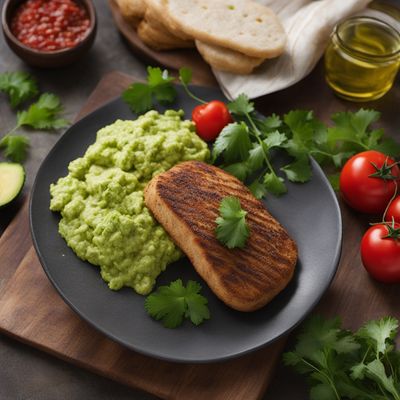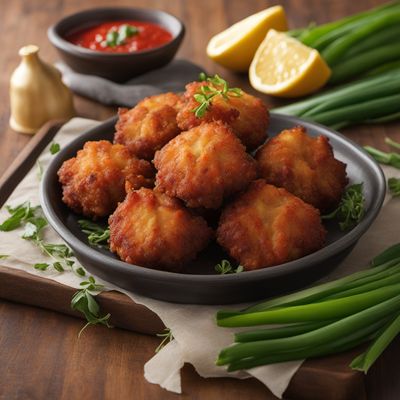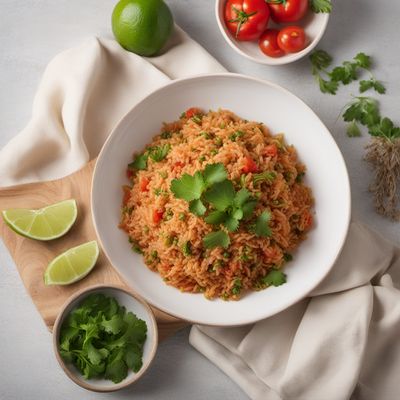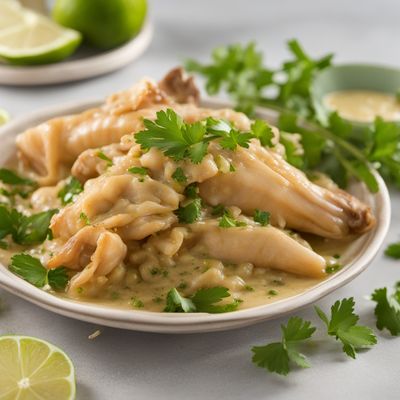
Ingredient
Conger
The Mighty Eel: Unveiling the Secrets of Conger
Conger is a long, snake-like fish with a slimy, scaleless skin that ranges in color from dark brown to gray. Its flesh is firm, white, and succulent, with a rich, meaty texture. When cooked, conger eel becomes tender and flaky, making it a popular choice for grilling, frying, or stewing. Its distinct flavor is often described as sweet and mild, with a hint of brininess.
Origins and history
Conger eel has a rich history dating back to ancient times. It is native to the coastal waters of the North Atlantic Ocean, particularly around Europe and North Africa. In many cultures, conger eel holds symbolic and culinary significance. It has been a staple in Mediterranean cuisine for centuries and is also highly valued in Japanese, Korean, and Portuguese culinary traditions.
Nutritional information
Conger eel is a nutritious ingredient, rich in protein, omega-3 fatty acids, and essential minerals such as calcium, phosphorus, and potassium. It is also relatively low in calories, making it a healthy choice for those watching their weight.
Allergens
Conger eel may cause allergic reactions in individuals with fish allergies.
How to select
When selecting conger eel, look for fish that has clear, bright eyes, shiny skin, and a fresh, mild aroma. The flesh should be firm to the touch and free from any discoloration or strong odor. If purchasing fillets, ensure they are moist and have no signs of drying or browning.
Storage recommendations
To maintain the freshness of conger eel, store it in the refrigerator at a temperature between 32°F and 38°F (0°C and 3°C). It is best to consume it within 1-2 days of purchase. If freezing, wrap the fish tightly in plastic wrap or place it in an airtight container to prevent freezer burn.
How to produce
Conger eel is typically caught in the wild by professional fishermen using nets or lines. It requires specialized equipment and knowledge to catch and handle safely. It is not commonly produced through aquaculture or home farming.
Preparation tips
Before cooking conger eel, it is essential to remove the skin and any bones. The skin can be easily peeled off using a sharp knife, and the fillets can be deboned by carefully running your fingers along the centerline and pulling out any remaining bones. Conger eel can be grilled, pan-fried, baked, or used in stews and soups. It pairs well with flavors like garlic, lemon, herbs, and spices.
Culinary uses
Conger eel is commonly used in various cuisines. In Mediterranean cuisine, it is often grilled or roasted with olive oil, garlic, and lemon. In Japanese cuisine, it is used in sushi, sashimi, and tempura. It can also be incorporated into stews, soups, and casseroles for added depth of flavor.
Availability
Conger eel is commonly available in coastal regions of Europe, North Africa, and parts of Asia, including Japan and Korea.
More ingredients from this category
Recipes using Conger

Venezuelan-style Conger Bread
Maracucho Delight: Venezuelan-style Conger Bread

Conger Bread with a Twist
Savory Seafood Delight: Conger Bread with a Flavorful Twist

Bahamian Conch Fritters
Savory Delights from the Bahamian Seas: Crispy Conch Fritters

Bahamian Conch Rice
Tropical Delight Conch Rice

Caribbean Buttered Conch Delight
Tropical Buttered Conch Medley

Venetian-style Stewed Conch
Conch alla Veneziana: A Venetian Twist on Bahamian Stewed Conch